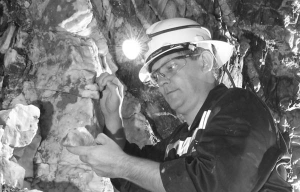A diversified portfolio of producing mines, low cash costs and a growth pipeline are the upshot of a merger between Lihir Gold (LGG-T, LIHR-Q) and Equigold (EQI-A), the companies say.
If the deal goes ahead, the combined group will have a market capitalization of about A$9 billion (US$8.4 billion) with world class assets spanning Australia, West Africa and Papua New Guinea producing more than 1.2 million oz. gold a year from 2009 with 25 million oz. in reserves.
The merger also creates a new company with a robust balance sheet, virtually no hedging, and cash costs in the lowest quartile of global producers.
Under the proposed deal, Equigold shareholders will receive 33 Lihir Gold shares for every 25 Equigold shares they own — representing a 24% premium to Equigold’s closing price on March 19. (That premium expands to 35.3% on Equigold’s 90-day, volume-weighted average trading price.
Equigold shareholders will get access to Lihir Gold’s massive gold resources and reserves, including the jewel in its crown — the flagship Lihir Island operation.
Lihir Island produces more than 1 million oz. gold each year, of which the company has traditionally processed about 600,000-700,000 oz., with the remainder stockpiled. This year it is forecast to process 700,000 to 770,000 oz. gold.
But in February, after a 12-month feasibility study, Lihir Gold announced that it would lift gold production capacity at the mine to about 1 million oz. per year starting from 2011.
The study concluded that the mine, 900 km northeast of Port Moresby in Papua New Guinea, could support increased gold production by an average 240,000 oz. per year over the life of the operation. From 2011 to 2021, output could be lifted by 2.35 million oz. to more than 10 million oz.
The investment in additional processing capacity will enable Lihir Gold to match its processing throughput rates with its mine production, thereby cutting back the stockpiling of ore.
The study also indicated that better economies of scale as a result would slash production costs to about US$80 per oz., following commissioning in 2011. The project would involve an investment of about US$696 million.
Another thing Lihir Island has going for it is geothermal steam. Since 2003, Lihir Gold has been harnessing an underground steam reserve to generate electricity, replacing heavy fuel oil powered electricity. The geothermal capacity of 56 megawatts provides about 75% of the company’s current electrical power needs and will save the company about US$50 million a year, compared to the cost of heavy fuel oil powered generation.
The large Lihir ore body contains more than 35 million oz. gold in the measured and indicated categories and 4 million oz. in the inferred category.
It has a measured resource of 53.8 million tonnes grading 2.52 grams gold per tonne and an indicated resource of 392.8 million tonnes grading 2.45 grams gold. There is also an inferred resource of 63.4 million tonnes grading 1.88 grams gold.
Lihir Gold is also developing an underground mine and processing plant in the historic gold mining center of Ballarat, 110 km northwest of Melbourne in Victoria, Australia.
Its Ballarat mine is scheduled to start production at the end of this year with an initial annual production rate of 200,000 oz. gold and a mine life estimated to be 20 years.
Ballarat has an indicated resource of 300,000 oz. gold (900,000 tonnes grading 10 grams gold per tonne) and an inferred resource of 1.2 million oz. gold (3 million tonnes grading 12.4 grams gold per tonne).
For its part, Equigold is bringing diversification to the table along with cash flow from its Mt. Rawdon operation and soon from its 85%-owned Bonikro mine in the southern Ivory Coast, which is expected to go into production within the next few months. The processing plant will be commissioned in June with commercial production starting in July. Bonikro is expected to produce about 140,000-150,000 oz. gold in 2009.
Equigold approved the development of Bonikro’s 929,000-oz. reserve following a bankable feasibility study in 2006. The project has a mine life of about eight years and life-of-mine cash operating costs are forecast to be about US$290 per oz.
For the first year, Bonikro is expected to produce 140,000 oz. gold, of which Equigold’s share is forecast to be roughly 120,000 oz.
Equigold’s other mines include Mt. Rawdon in southeastern Queensland (current mine life greater than ten years) and Kirkalocka in the Murchison region of Western Australia. As of June 2007, Mt. Rawdon contained 1.1 million oz. gold and 4.3 million oz. silver. Gold production last year totaled 110,992 oz. at a cash cost of US$347 per oz. It is estimated that Mt. Rawdon will produce about 100,000 oz. gold per year for the next ten years.
Milling at Kirkalocka is expected to exhaust the broken ore stockpiles this month, at which time the project will move into the closure and final rehabilitation phase. Gold production last year at Kirkalocka reached 37,472 oz. at cash costs of US$402 per oz.
Equigold has 15,351 sq. km of exploration licences (granted or under application) in the Ivory Coast in West Africa’s prospective Birimian greenstone belt.


Be the first to comment on "Lihir Gold and Equigold merger will create global gold major"